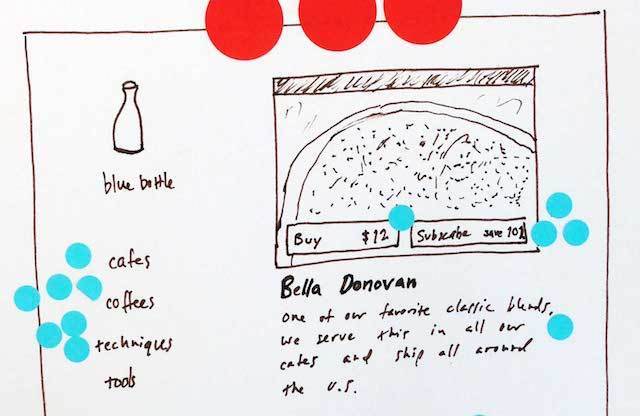Writing as a Design Skill.
John Zeratsky, partner at Google Ventures, shared his “5 Principles for Great Interface Copywriting” and I thought it was invaluable and touches on an element of design that is severely overlooked: writing.
This couldn’t have come out at a more crucial time for us, as we’re re-doing the copy for Bespoke’s iPad and iPhone apps, from buttons, to pop-ups, to FAQs, and more. So far, I learned that it’s a very tedious task and I truly applaud the developers / copywriters / UX designers / content strategists, etc. who make the apps we use on a daily basis appear to be seamless and intuitive without having to use much thought at all.
It’s still an on-going process for us, one that I don’t really consider to have an ‘end’ but more of a continuous improvement, but putting it down on paper, without a doubt, helps a lot.
Copy is one of the most important pillars in the overall user experience of any design, and John provided a great argument, and a very helpful list. Below are his points, and the takeaways from each one:
1. Clarity is king.
- Be specific.
- Watch jargon and abbreviations.
- Front-load your labels.
- Don’t be lazy.
2. Personality doesn’t matter as much as you think.
- Aim for descriptive and helpful instead.
- Nail the basics first, then you can inject personality, but…
- Don’t try too hard—your personality will come through naturally.
3. Just tell me.
- Just tell your users what you want them to know/what something does.
- You cannot promise something and not explain what it does.
4. By the way, people do read.
- People WILL read the copy in your products, so take the time to get it right.
- The mere existence of text can have surprising effects on credibility and trust.
- Ex. Blue Bottle Coffee’s founding story on its website makes the company seem more serious and legitimate.
- Don’t be afraid to put copy as long as it’s clear and straight to the point.
5. Writing is part of the design process.
- It doesn’t belong in the beginning, middle, or end, because it’s something we need to do throughout the entire design process.
- Just say no to lore ipsum.
- If writing is not a part of that process, we’re leaving out a huge component of the user experience, and our products suffer.
With that said, I’m looking forward to constant iteration and deriving changes from user feedback. As I said, it’s a continuous process for us, and while it’s usually considered as the “boring” stuff, I consider anything that improves the user experience to be really exciting. Because what’s “cool” to me is not just building stuff—it’s making sure people use it!
